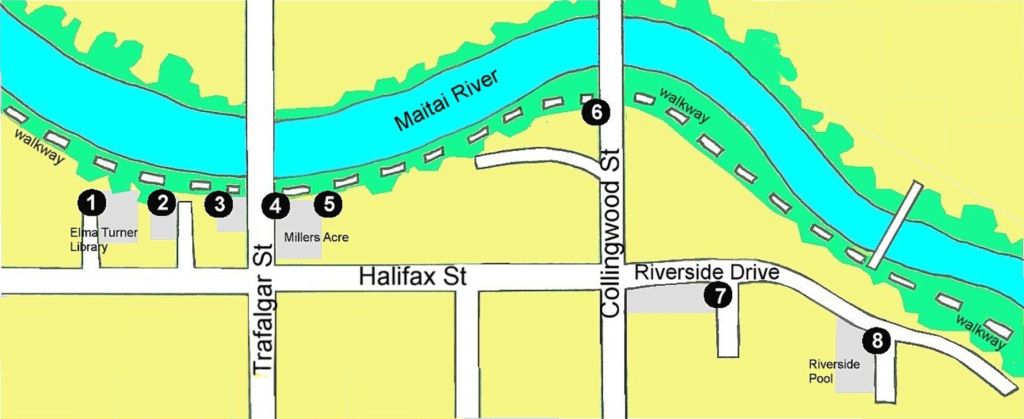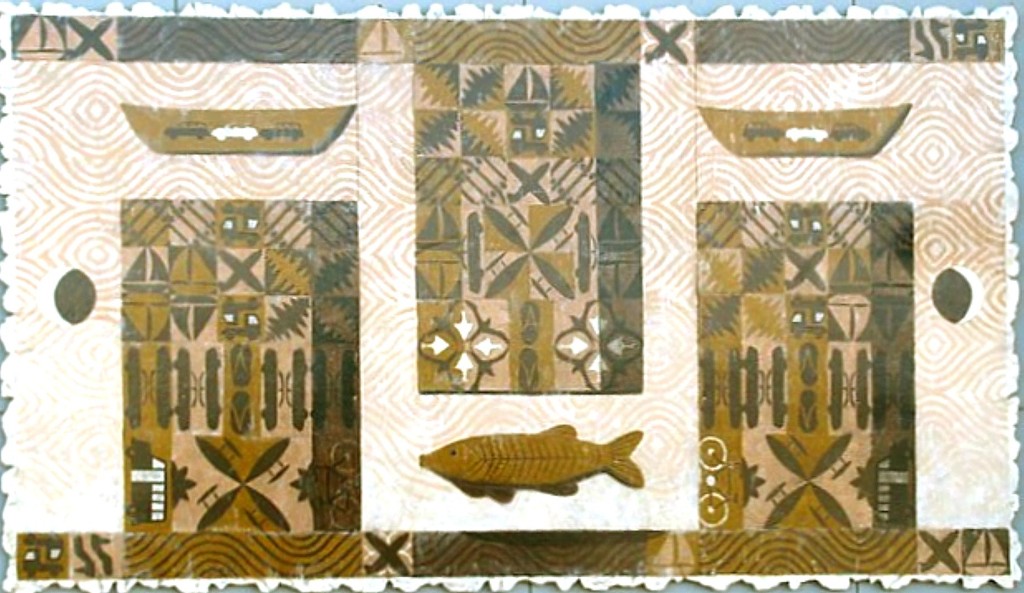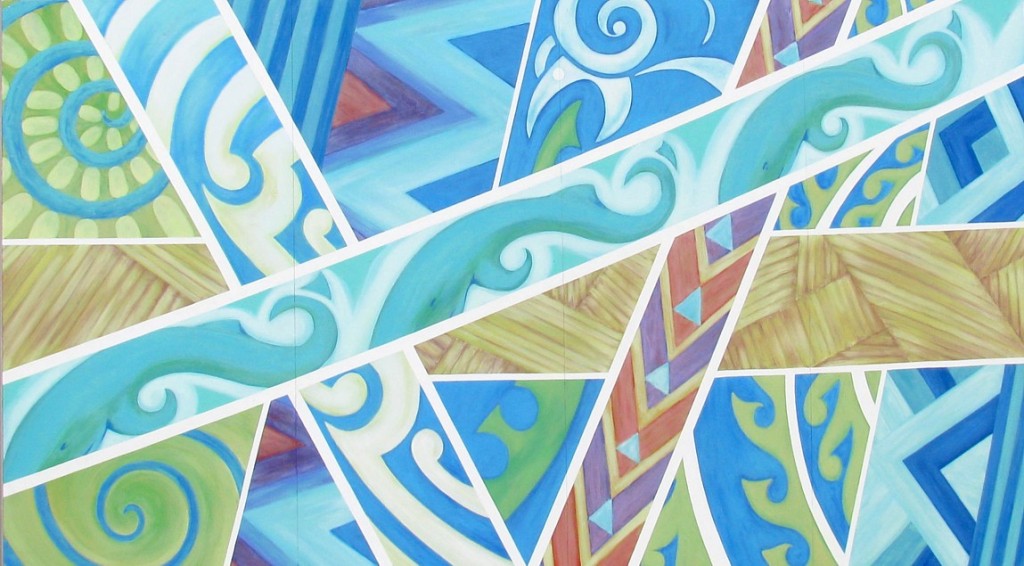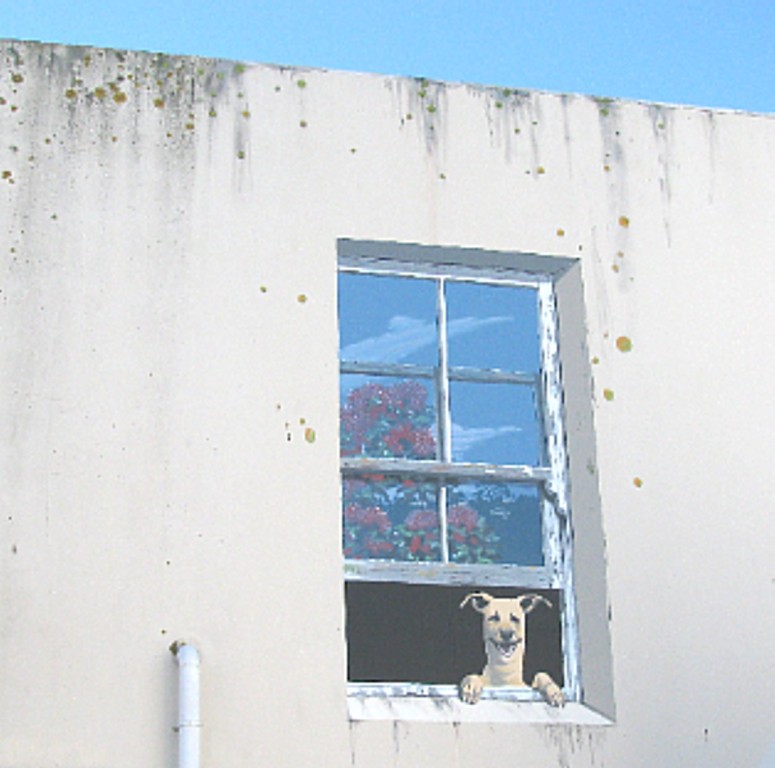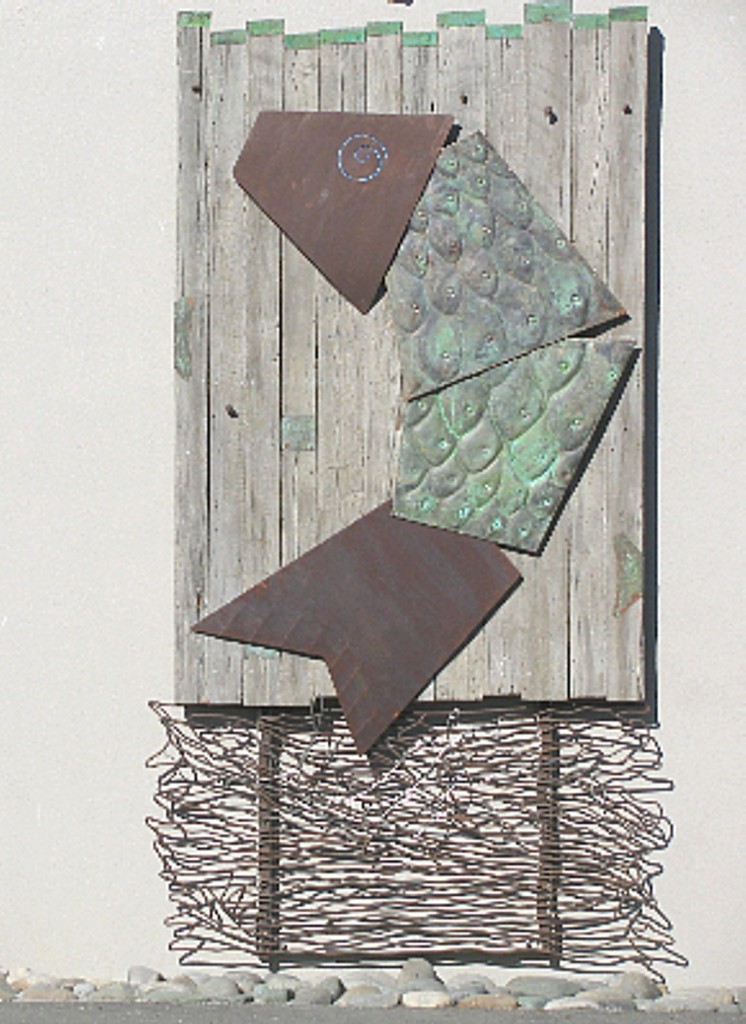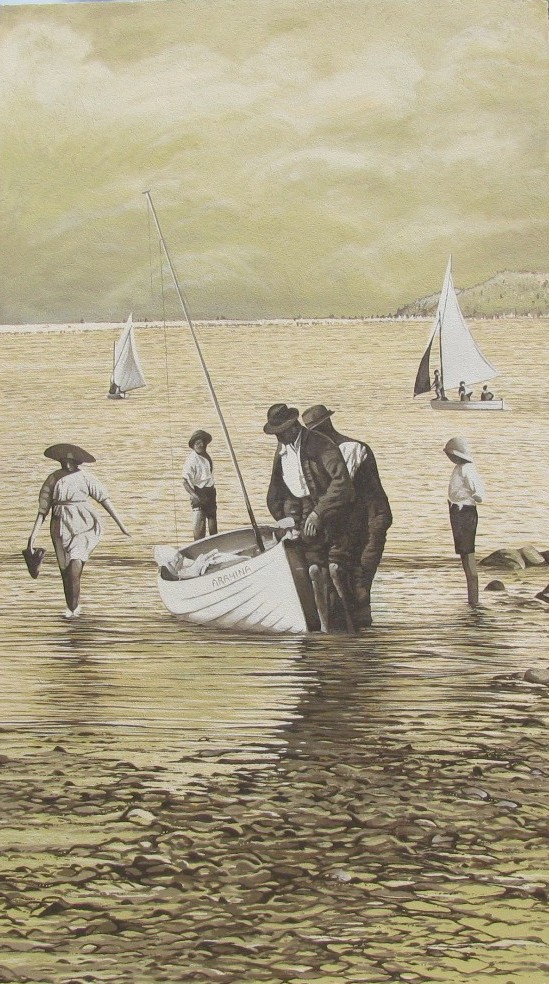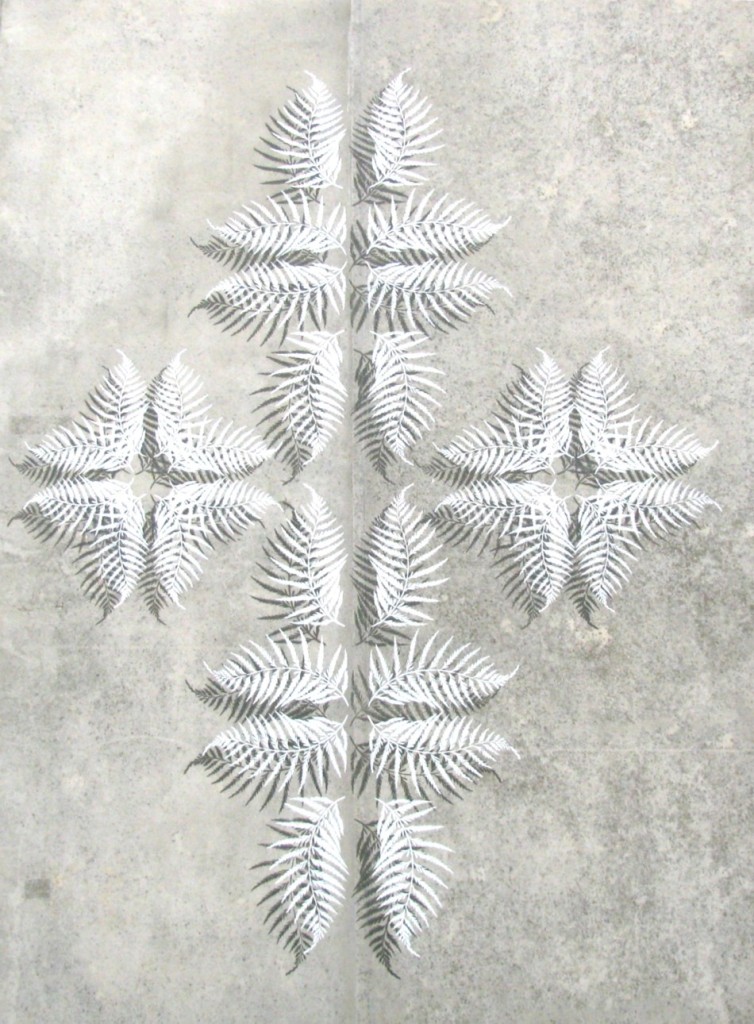Riverside Murals
The Riverside Murals project started 30 November 2013, setting out to create a mural gallery of eight different styles by eight local artists.
The Riverside Murals project started 30 November 2013, setting out to create a mural gallery of eight different styles by eight local artists. It was proposed by local artist Chris Finlayson, who curated and organised the whole project and found local artists willing to step outside their comfort zone to create a variety of works. Nelson City Council allocated funds for the project in the Annual Plan 2013-2015. A fifteen minute section of the Maitai walkway has become an outside gallery, where each work defines a different style of mural and yet they share a connected theme to the river.
Motif style: Stayin Current by Robert Siataga-Kavanaugh (1)
This mural is on the exterior of Elma Turner Library, facing the carpark at the river end of the buidling. It is in motif style, with repetition of symbols to form a larger scheme of design, displaying a cultural theme. It has been used to good effect by the artist, creating a mural reminiscent of tapa cloth. The motif style links well to the Library as it reflects how we communicate and transport our knowledge and culture. Boundaries and bridges across the river current are stacked with icons: aeroplanes, sailboats, buses, skateboards, shoes, cars, bikes, canoes, river flora, birds and fish.
Decorative style: Untitled by Robin Slow (2)
Since 1991 Robin has worked with the whānau at Onetahua Marae producing murals, traditional instruments, kowhaiwhai and carving, finishing in the completion of the wharenui, Te Ao Marama. For the last 29 years he has been teaching art at Golden Bay High School, Takaka, and Mohua/Golden Bay.
He brought this experience and ten students from Nelson Intermediate School together to paint a kowhaiwhai pattern reflecting on river life from a Māori perspective. The artwork, which is on the rear wall of the Car Company premises that over-looks the Maitai River, merges a unified (Te Ao Māori) motif into patterns that connect human pathways to the natural world. Pathways see activities, such as gathering food and clothing overlap, submerge and weave meaningful links between the spiritual identities of the sky, mountain and sea.
Trompe l’oiel ( Trick of the eye): Pohutukawa by Chris Finlayson (3)
This artwork, on the back of the Accountant's Building, momentarily interrupts a view of reality by including a make believe window in a concrete wall, with a smiley dog looking out. There is a playful sense of architecture. Reflections of the flowering Pohutukawa trees beside the Maitai Walkway in the window panes brings focus back to the river environment.
Finlayson is known for encouraging the community to be a part of the painting process so they feel ownership of the local landmarks created. He has a number of murals in the city, including the famous and much photographed 'Aotearoa' mural at Port Nelson, painted in 1984 and refurbished in 2009. His versatility and skill is much admired, along with a sense of humour which injects a liveliness in his subject matter that audiences can easily respond to.
Sculptural relief: Jumping Fish by Mark Thomas (4)
Mark's back ground is as varied and interesting as his work. Predominately he is a metal smith, though he can quickly and skilfully turn his mind and hand to working in mixed media. His energetic fish, at Millers Acre on the wall facing Trafalgar Street, is created from steel and copper and jumps out from a backdrop of weathered wharf timbers, giving a sense of modern technology against historic materials. Trout may well have leapt out of the Maitai here, given that trout were introduced to the river by the Acclimatisation Society, no doubt dreaming of tasty foodstuff and sport for the early European settlers. One can imagine a fisherman’s delight in catching this fish.
Mark also made the large ornate gates which adorn the public toilets in Nelson's Buxton Square car park. He can be found most days in his studio at the old brick works building at Bishopdale on Waimea road near the S.P.C.A.
Representational style , 1915: Mouth of the Maitai river by Rick Edmonds (5)
At Miller's Acre an east facing section of wall hosts a mural painted in sepia/gold colour tones, creating a scene as if captured in a loved old photograph of an early time. It is realistic in the way it depicts people and sail boats at the mouth of the Maitai River. The gold tones echo the golden idealised memories of happier days when fish were plentiful where the river mouth met the Haven. Since that time much reclamation has taken place. The work was created by artist Rick Edmonds, who has another mural nearby at the entrance to the Labour Department on Bridge Street. This features large portraits of friends and family woven together. Mr Edmonds has painted about 60 murals around New Zealand including five at Havelock.
Urban art style: Retro 98 by Wiremu James (6)
The mural Retro 98 was created underneath the Collingwood Street Bridge, which had a number of site obstacles to be overcome. Special consent to paint here was needed as the coating on the metal parts of the bridge could not be disturbed, making it difficult to prepare the surface ready for painting. The work is based on a 1998 design by Wiremu James, who now lives in Australia. He drew it when he was 14. Project manager Christopher Finlayson said he was sitting with Mr James when "he drew [the design] and gave it to me". Mr Finlayson kept the design until he pulled it out one day and thought, "Whoa, this would be perfect" for the riverside murals. Chris painted it with a group from community.
The Urban/street-style design displays layers of effects such as, riverbed turning into sky and water patterns that transform into birds. Sandwiched between these effects, is the word 'Flow'. Off to one side, a youthful face with a wry smile observes. The use of fluorescent paint and urban art style is a good contrast to the Nelson Youth Council mural opposite it on another face of the Collingwood bridge underpass.
Architectural style: Intersection, by Miriam Hansen (7)
This artwork is on the side of the ACC buliding on Malthouse Lane. Using stencils and spray paint, the composition adds an extra 3D layer to the existing wall plane. The idea here is to soften the hard surroundings - "the static and hardened characteristics of our artificial domain by the suspension of a natural world component". Delicate fern patterns mirror the fragile and intricate fabric of river life.
Tiles/Mosaic : Flow by Kathaleen Bartha (8)
Kathaleen Bartha's work, on the wall of Riverside Pool, has a shiny tile effect that is attached to the wall as a panel. Nelson City Council required a movable installation in this site. The east facing wall site is shaded and this provided an opportunity to use light-weight digital innovations best suited in a site which is sheltered from scorching UV sun-rays. The work was painted on to a tin sheet before being reproduced on polycarbonate panels scored to create a tile effect.
Kathaleen felt that the tiled style was appropriate at this site, given the ancient link to the architecture of baths and pools. The viewer has the experience of looking through water at various creatures, with the distortion this creates to images, like a puzzle to be solved. Kathaleen has spent much time at sea and her art is often linked to water themes.
2015
Updated March 2021
Story by: Debbie Daniell-Smith & Chris Finlayson
Further Sources
Newspapers
- Basham, L. (2014, April 9) Walkway murals project seeks help. Nelson Mail. Retrieved from Stuff:
http://www.stuff.co.nz/nelson-mail/news/9921081/Walkway-murals-project-seeks-help - Davidson, K (2013, December 15) Mural artists go with the Maitai flow. Nelson Mail. Retrieved from Stuff:
http://www.stuff.co.nz/nelson-mail/news/9480443/Mural-artists-go-with-the-Maitai-flow
Websites
- Art by C.J. Finlayson. Retrieved 18 May 2015:
http://www.finlaysonart.co.nz/ - Riverside Murals Project. Retrieved 18 May 2015:
http://www.theprow.org.nz/arts/riverside-murals/#.YEArGf0zZPY - Stage2 murals. Retrieved from the Big Idea, 18 May 2015
https://www.thebigidea.nz/showcase/202413-stage2-murals
